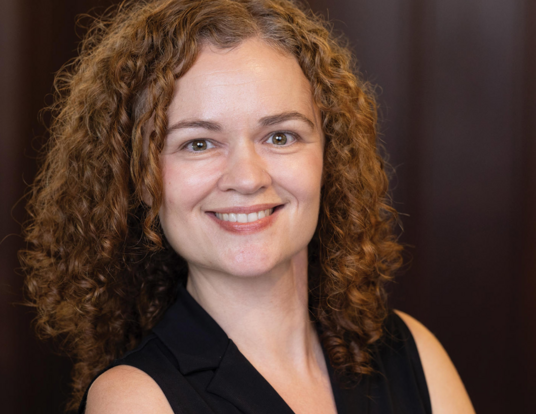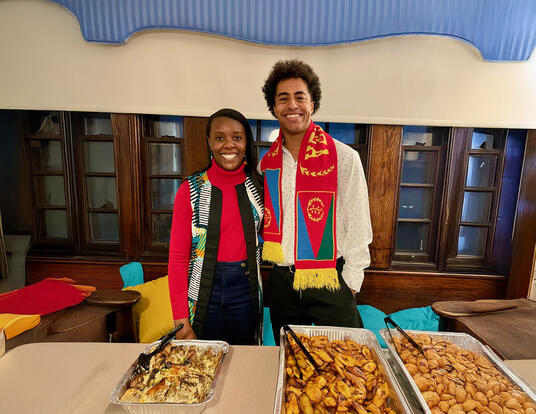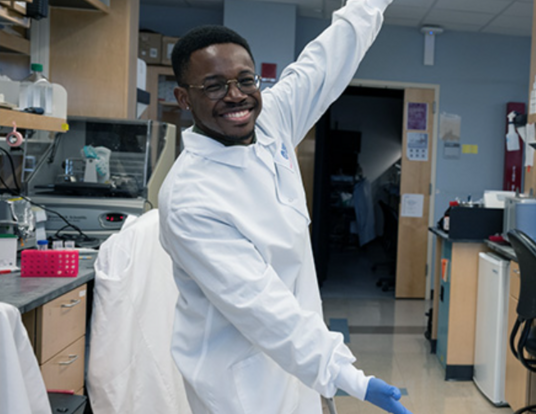Fitness, Physics, and Fighting Pathogens
Vaibhav Mohanty, MD-PhD student
Research at Risk: Since World War II, universities have worked with the federal government to create an innovation ecosystem that has yielded life-changing progress. Now much of that work may be halted as funding is withdrawn. Find out more about the threats to medical, engineering, and scientific research, as well as how Harvard is fighting to preserve this work—and the University's core values.
Vaibhav Mohanty is an MD-PhD student in the Department of Chemistry and Chemical Biology who studies how theoretical physics and evolutionary biology can be combined to fight disease. Mohanty discusses his research, his academic pathway from Harvard to Oxford and back, and how he is making memories—and music—at Harvard Griffin GSAS.
Peaks and Plateaus
We usually think of evolution as a slow process that takes thousands of years, but in reality, all of us are affected by it daily. Viruses, bacteria, and even certain kinds of cancers rapidly accumulate mutations to try to escape our immune system. During the COVID-19 pandemic, for instance, the virus spread very quickly, mutating along the way and creating many different strains.
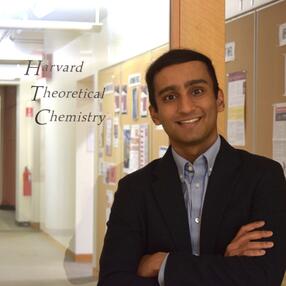
People also often associate evolution with “survival of the fittest.” If viruses were simply becoming fitter and fitter over time, then once a virus population reached “peak” fitness, it would stop evolving and the immune system would find a way to kill the viruses once and for all. But evolution isn’t just driven by survival of the fittest. What viruses do instead is hedge their bets between crowding up around sharp peaks and spreading out over “plateaus” of fitness. When the immune system comes around, it’s more like trying to play whack-a-mole than taking out all the viruses at once, and some of the virus strains can escape, leading to new waves of infection.
This analogy of peaks and plateaus of fitness describes how physicists and theoretical chemists think about evolutionary fitness landscapes, which are used to visualize the relationship between genes and reproductive success. Connections and analogies between fitness landscapes and other systems in physics, such as magnetic systems and spin glasses, make it easier to translate the math from the physical sciences to biology.
Here at Harvard, my goal is to make this physics-based perspective on evolution practically useful for treating disease. For example, if these viruses spread around a fitness plateau, can we build a fence around it through new vaccination strategies designed to trap the evolving population? Right now, I am trying to build what I call “mutational traps” for these diseases using the tools of computational chemistry and theoretical physics to try to slow down evolution, so our immune systems have the opportunity to adapt to the disease.
The Bridge
This is not my first time at Harvard Griffin GSAS. I was an undergraduate student in the joint AB/AM program working in the same department I’m in now, albeit on very different problems involving quantum mechanics in graphene (a material made of a one-atom-thick layer of carbon atoms arranged in a honeycomb pattern). It was my time in that program that confirmed my plans to pursue an MD-PhD. In my senior year at the College, I won a Marshall Scholarship and went to Oxford in 2019 for a PhD in theoretical physics. That’s where I started working on this overlap with evolutionary biology, which suddenly became relevant when the pandemic broke out in 2020. I finished my dissertation in 2021 and returned to Harvard to join the Harvard/MIT MD-PhD Program.
During my clinical rotations, I saw firsthand the impacts of infectious disease and cancer. The sheer number of people affected by rapidly evolving diseases is astoundingly high. The desire to prevent and treat them is what drives my research and clinical goals. The joint MD-PhD training has provided a bridge between my background in theoretical physics and its practical application in the field of medicine.
Making Memories, Making Music
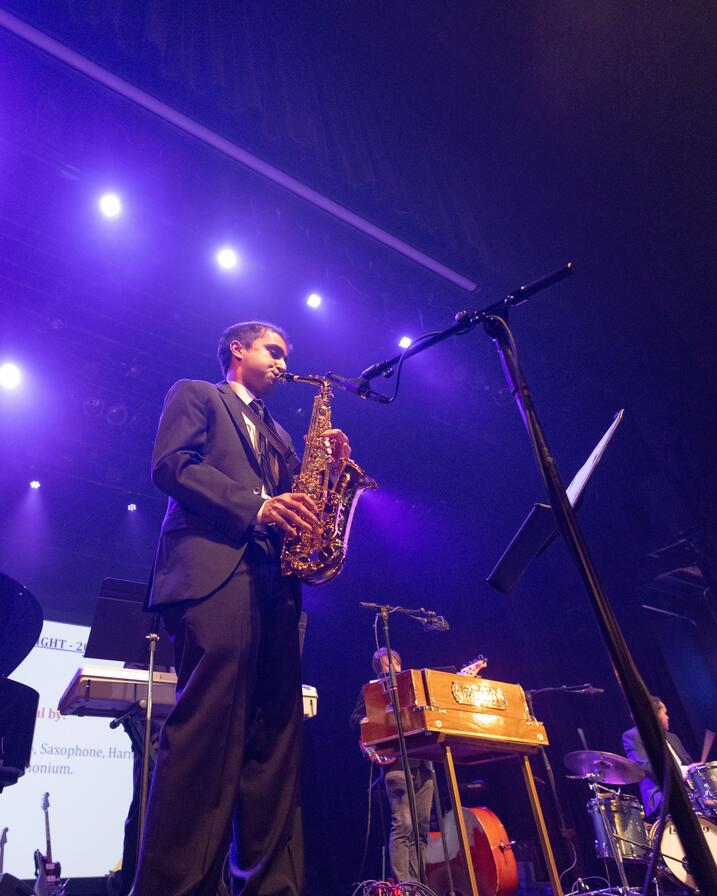
I lived in Quincy House when I was an undergraduate at Harvard. Now that I’m at the Medical School and Harvard Griffin GSAS, I’ve returned to Quincy as a resident tutor. I hoped that I could join the staff there if I came back for graduate school, and it has been really rewarding to be a part of the Quincy community again. It’s a chance to give back to the house that gave me so much as an undergraduate student.
Most of the tutors are fellow Harvard Griffin GSAS students, and we’ve made amazing memories supporting the undergraduates and participating in Quincy House life. It’s exciting to be there for students as an advisor and to help them apply to graduate school and fellowships. This is my first year as a PhD student, but I’ve already made so many great friends and memories with my cohort. As a composer and jazz pianist and saxophonist, I’ve especially enjoyed making music with my graduate school peers.
This research was funded by the National Institute of General Medical Sciences.
Get the Latest Updates
Join Our Newsletter
Subscribe to Colloquy Podcast
Simplecast


